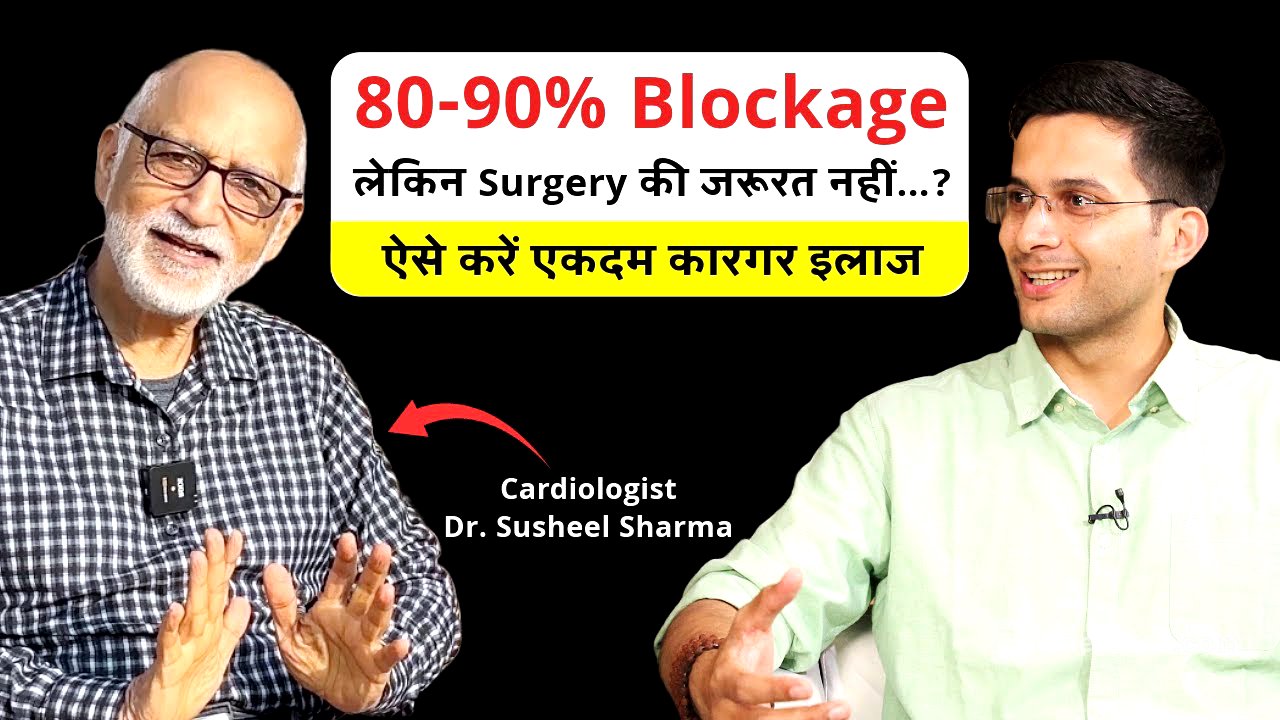TLDR;
This video features a discussion with cardiologist Dr. Sushil Sharma, addressing the reversibility of heart blockages and the necessity of procedures like stents and bypass surgeries. It distinguishes between emergency and non-emergency situations, emphasizing that lifestyle changes and medical therapy can reverse blockages in 80% of non-emergency cases. The conversation covers medication, lifestyle adjustments, and the specific factors contributing to heart blockages, providing a comprehensive guide to heart health.
- Emergency situations often require immediate intervention with stents or bypass surgeries.
- Lifestyle changes, medication, and risk factor modification can reverse heart blockages in most non-emergency cases.
- Maintaining healthy cholesterol levels, managing stress, and avoiding smoking and excessive alcohol are crucial for heart health.
Introduction: Reversing Heart Blockages [0:06]
Himanshu Bhatt introduces Dr. Sushil Sharma, a cardiologist with 40 years of experience, to discuss reversing heart blockages without stents, bypass surgeries, or angiography in 80% of cases. Dr. Sharma clarifies the importance of distinguishing between emergency and non-emergency heart conditions. In emergency situations, such as a heart attack or continuous chest pain, immediate angiography and stent placement are necessary to save lives.
Emergency vs. Non-Emergency Situations [0:01]
Dr. Sharma explains that 10-20% of people face emergency heart situations requiring bypass or stent procedures. He defines non-emergency cases as chronic stable angina or coronary artery disease, where symptoms like chest pain or difficulty breathing occur during activity and subside with rest. For these stable conditions, medical therapy, risk factor modification, and lifestyle changes are recommended as the first line of treatment, potentially reversing symptoms in 80% of patients, according to the American College of Cardiology and American Heart Association's 2023 guidelines.
Medical Therapy and Lifestyle Changes [0:04]
Dr. Sharma emphasizes that reversing blockages involves guideline-directed medical therapy, risk factor modification, and lifestyle changes. To reverse blockages, total cholesterol should be below 150, LDL below 50, triglycerides below 100, and C-reactive protein below one. Medication is necessary to achieve these levels, and it may be required for several years. He references the DISCO trial, Coldwell Asle Stein diet trial, and Dean Ornish lifestyle trial, which scientifically demonstrated the reversal of blockages through lifestyle adjustments, stress management, yoga, and meditation.
DASH Diet and Lifestyle Recommendations [0:06]
Dr. Sharma recommends the DASH approach: Diet, Activity, Stress management, and Habit change. The diet should include whole grains, fruits, vegetables, and legumes, while minimizing oil, salt, sugar, animal dairy products, and processed foods. He advises walking 7500 steps daily and highlights the importance of stress reduction. Citing the Interheart study, he notes that any amount of alcohol is detrimental to Indians due to genetic differences.
Understanding Heart Blockages [0:08]
Dr. Sharma uses the analogy of a pump, pipes, and water to explain heart function, blood vessels, and blood. The quality of blood affects the blood vessels, and thick, sticky blood damages the veins. High cholesterol and sugar levels contribute to this thickness. Factors weakening blood vessels include cigarette smoking, stress, obesity, and lack of exercise.
The Process of Blockage Formation [0:10]
When fat and cholesterol enter the inner lining of the veins (endothelium), the body initiates an inflammatory response, leading to narrowing and eventual blockage of the artery. Controlling cholesterol, triglycerides, and lipoprotein is essential, often requiring both diet and medication.
Heart Function and Reversibility [0:12]
Dr. Sharma explains that normal heart function is measured by an ejection fraction of 55%. When blockages become severe, heart attacks occur, and heart function weakens. If the ejection fraction decreases from 55-60% to 20%, it may be possible to improve it back to 50-55% by addressing the underlying conditions and using new heart failure medications. If a patient improves heart function from 20 to 40-45% through lifestyle changes and medication, further invasive procedures may not be necessary.









